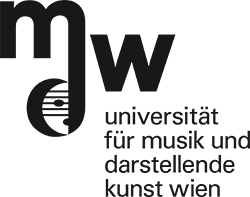The promise of transformative, touching experiences is what drives the art business. Sociologist Hartmut Rosa, framing it in a broader perspective, identifies this quest as a historical paradigm that propels the acceleration of late modern society in the interest of increasing the individual’s “shares of the world”. He refers to it as the promise of resonance. Resonance, as a modality of correlation with the world, is something to which we are naturally drawn. It is a flow of mutual interchange in which two voices (be they collective or individual) speak independently and yet affect each other. While it is possible to observe resonance, it is at best fruitless (and at worst dangerous) to try and formulate its universal blueprint; resonance cannot be defined unilaterally by one subject and imposed on an object. It is a culturally, psychologically, and situationally mediated process. Drawn by the necessity of ascertaining whether or not my future role as an interpreter of contemporary music would facilitate resonant dynamics with the listeners, I set out to trace the historical trajectory of music consumption. This is where my doctoral research began. Concert institutions and digital platforms both chase the same dream: making resonance accessible and reproducible on demand. But while curators formulate educated guesses about the tastes and priorities upheld by groups, Spotify and YouTube browse granular data pertaining to names, surnames, and GPS locations. These two types of mediation are not mutually exclusive, but rather symbiotic—and in this sense, removing resonance from the transactional realm and putting it at the centre of an artistic process challenges the very premises of the economic model via which we create and distribute music. In my initial case studies, I attempted to take concert formulas and tweak their variables. Everything changed however, when I realised that performance has to orbit around practice, not vice versa. I then started taking long, aimless walks through Vienna as would a flaneur, engaging in spontaneous conversation with complete strangers. A few of these interactions have since grown into sustained dialogues punctuated by creative inputs and outputs. There is no discourse, socio-political selection, or ethical agenda behind these encounters; the encounter is all there is. Some of the music generated through this process is completely alien to the people I meet. If and when they say “this is not music to me,” I then ask, “What’s missing?”—and all of a sudden, we’re collaborating. Inter-research contamination occurs when “external” co-researchers join us to create a performance where the artworks that result are then gifted—in whatever archivable forms—to the participants. As Phaedrus, the namesake of this research method, inquires in Robert Pirsig’s novels: “If everyone knows what Quality is, why is it so hard to define?” This process, currently in its early stages, has come to include four collaborators and the two co-researchers Aya Masui (Lucerne University of Applied Sciences and Arts) and Livia Schweizer (Sibelius Academy). Preliminary outcomes will be presented during two international artistic research conferences held at the Estonian Academy of Music and Theatre in Tallinn (for the European Platform for Artistic Research in Music) and the University of Porto (for the Society for Artistic Research).
Comments are closed.

